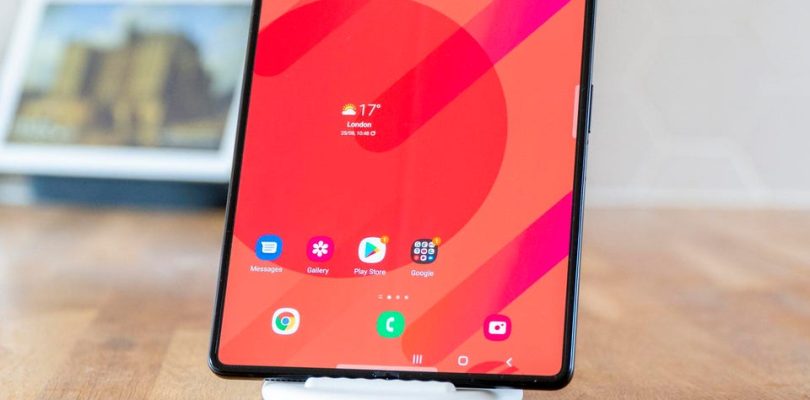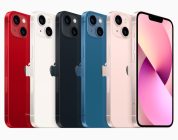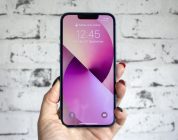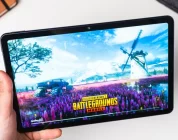According to some, folding is the next great evolution of mobile telephony. According to others, they are a category of products doomed to die. I prefer to opt more for the first than for the second.
However, that own inclination does not mean that the folding smartphones that we have known so far are perfect or refined. There are still some battles to be won to affirm without any asterisks that these products are up to par in every way of a conventional smartphone.
Luckily things are on the right track. The newly introduced Galaxy Z Flip 3 is one step closer to achieving such an important milestone for Samsung and many other players in this industry who want the success of this new category.
Samsung Galaxy Z Fold 3
The Samsung Galaxy Z Flip 3 brings with it several novelties and great features, but two are the most decisive:
It is more resistant than before. The new chassis, among other things, includes a new mesh that increases the screen's resistance. And it shows a lot. The panel transmits more firmness when interacting with it; there are no marks if you hit it with a fingernail, etc. It also resists in water, something that, until recently, was unimaginable in a folding mobile. And the hinge, meanwhile, has a fairly uniform trip that conveys enough confidence. Evolution is more than palpable in this regard. You don't have the feeling that it's going to break easily.
It's much cheaper. Specifically, it will be sold in Spain for 1,059 euros. It is still an expensive product, but this price is much more attractive than the 1,500 euros for which the original model was launched. The downgrade puts the Galaxy Z Flip 3 in the same window as a next-gen iPhone or a high-end Galaxy S. So now you don't have to pay a premium for having a folding screen. And that is essential to gain traction.Samsung folding mobile
Easy: almost the same as with any other smartphone. Having a folding screen like this will not make you change your usage patterns – as, perhaps, it would happen with the Galaxy Z Fold 3 -. And that, if you analyze it carefully, is good and bad news for Samsung. Good, because it means that the Galaxy Z Flip 3 is refined enough to perform equivalent to that of other conventional mobiles; but they are also bad because the experience, beyond the novelty of its design and some specific functions, is not so different from what we get with other Galaxy.
As you can imagine, this phone attracts attention easily, because not many people have seen a modern mobile that folds in half. Aesthetically, we could say that it shows an important breath of fresh air for an increasingly monotonous industry.
This form factor also brings some benefits when it comes to size. However, you have to bear in mind that, when folded, the phone ends up being thicker than a conventional mobile. If you wear clothes with shallow pockets, this feature will benefit you, as the device will not protrude. But, if that is not your case, it will end up being what is eaten for what is served: what you gain in height, you lose in thickness.
On the other hand, the flexible panel allows you to use the phone at different angles, which opens the door to some interesting functions. For example, you can turn your mobile into a makeshift tripod to take pictures of yourself with the timer or improve the night mode results, which require the maximum possible stability. You can also rest the phone on a surface and play a video or make a video call on the upper half, using the lower half as a stand.
Another great feature of the Z Flip 3 is the outer screen, which is now larger, is much more practical, and has a fairly good quality. I’ve found it useful for three things: controlling music, viewing incoming notifications, and paying at merchants using Samsung Pay without opening the phone. You can also add different widgets and even use them to see yourself while taking photos with the rear camera, but for the latter, I don’t think it is too useful since the image displayed on the screen is cropped.
None of these exterior screen options are new since the always-on technology we find in many conventional smartphones already allows us to perform these tasks with the same ease. But, considering that this is not possible with a folding mobile, it is appreciated that Samsung I Include.
With that being said in this review, the experience with the Galaxy Z Flip is quite similar to that of any other smartphone. Everything else is very similar to what we find in other Galaxy –or even in other competing mobiles– but it provides a more comfortable experience.
The screen is 6.7 inches, but it is not the same as that of, for example, a Galaxy S21 Plus. The one on the Galaxy Z Fold 3 is a bit taller and, in turn, narrower. What does remain the same is the resolution (Full HD +) and OLED technology. As a novelty compared to the previous generation, we gain a variable refresh rate of up to 120 Hz, contributing to smoother transitions.
Samsung Galaxy Z Fold 3
Despite the clear progress that the Galaxy Z Flip 3 represents, the purchase of this phone entails some sacrifices compared to a conventional phone. They are as follows:
As far as image quality is concerned, the screen is at the height of what we find in, for example, a Galaxy S21. But we must make two observations about it: the fold is still noticeable, unfortunately, and, despite all the improvements, Samsung continues to warn that we are careful with it as soon as we turn on the phone. It is not a drama, but they are details that have yet to be refined.
The fingerprint reader is on the side, probably because Samsung has failed to implement it under the display (or it is too expensive). It works, it works fine, but it is quite high. Placing it in the lower half would have been better from an ergonomic point of view, in my opinion. That, or place it under the screen, which is where most phones have it in 2021.



